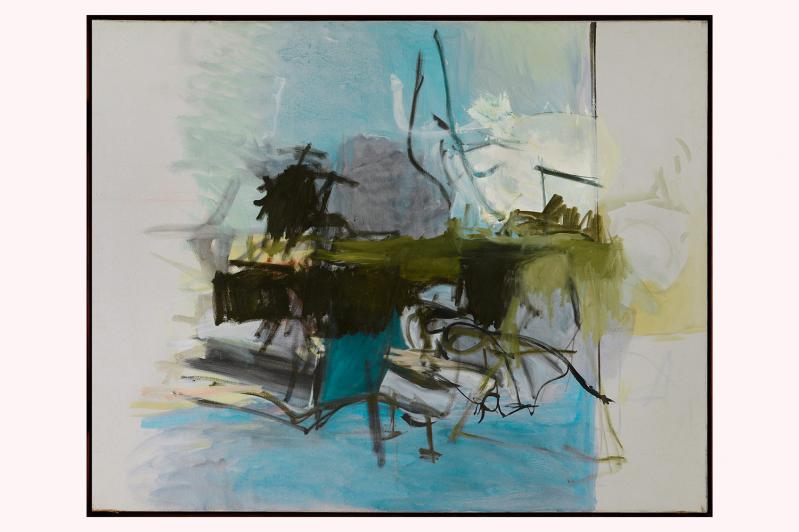A frequent visitor to the South Fork, Walter Plate spent most of each year in Woodstock, N.Y., where he settled after serving in World War II. But that didn’t keep him from absorbing the same inspiration from the East End as his associates Willem and Elaine de Kooning, Adolph Gottlieb, Philip Guston, and Herman Cherry, a mentor.
The Pollock-Krasner House and Study Center in Springs is showing 11 paintings and works on paper by Plate, one of the youngest postwar Abstract Expressionists, born 24 years after de Kooning. He is another of those artists who achieved success while they were
alive, but then fell out of the history books for one reason or another.
Starting in the early 1960s, Plate came yearly to East Hampton to visit his brother’s house, which was a block from the ocean, an early love of his. Plate’s summers here consisted of swimming, observing those around him at the beach, and taking in the vaunted East End light. He also played outfield a few times in the Artists and Writers Softball Game.
The exhibition focuses on the decade from 1961 to 1971, when these influences ended up in his paintings. The artist died of a cerebral hemorrhage in 1972 at the age of 47.
Cherry, whom Plate met when both were studying in Paris with Fernand Léger after the war, said of Plate’s painting, “He skated across a canvas as gracefully as a champion Olympic ice skater. There were no missteps with his brush.”
Many agreed, with museums such as the Whitney Museum of American Art including him in its Annuals in the 1950s and 1960s and acquiring his work for its collection. The Walker Art Center in Minneapolis, the Art Institute of Chicago, the Denver Art Museum, and the Corcoran Gallery of Art in Washington, D.C., were some of the other institutions that recognized Plate’s talent and exhibited his work.

Helen Harrison is the curator of this exhibition, and she noted that his brand of lyrical abstraction was defined as “Abstract Impressionism” by Elaine de Kooning. A 1958 show with that title at the Arts Council of Great Britain included his work. The difference between Abstract Expressionism and Abstract Impressionism, as described by Lawrence Alloway, the curator of that show, was that the latter maintained ties to nature as a reference.
From 1959 to 1968, Plate taught summer classes at the Art Students League in Woodstock. He served as an associate professor of art at Rensselaer Polytechnic Institute in Troy, N.Y., from 1964 until 1972. He also taught in Chicago,
according to his son, Marc Plate, in an essay for the exhibition catalog.
According to Cherry, he was known to be a perfectionist and destroyed much of his work. One gallery that represented him described his work as scarce in the marketplace. This exhibition, derived from his estate, is then something of an event, a chance to see an artist maintain his commitment to abstraction throughout his life, even when the art market pushed many artists in another direction.
The show will remain on view through Oct. 31.

